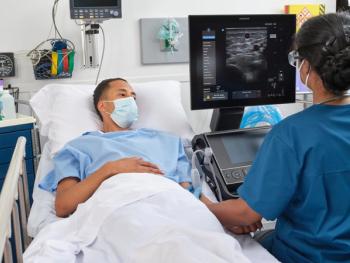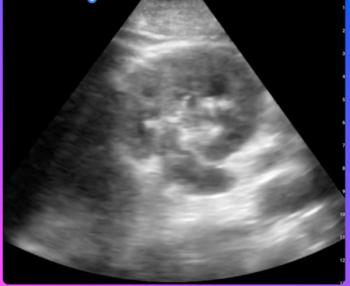
Using Breast Ultrasound for Prognosis
New study demonstrates ultrasounds effectiveness in determining prognoses in women with breast cancer.
In addition to identifying potential malignant lesions in women with dense breast tissue and serving as supplemental imaging to mammography, breast ultrasound can also be used to help predict breast cancer survival rates before a patient goes in for surgery, based on research findings.
According to Brooke Lawson, MD, of Ninewells Hospital and Medical School in Scotland, various characteristics of invasive breast cancer that can be seen via ultrasound correlate strongly with whether a woman will achieve 5-year breast cancer survival. Having this preoperative prognostic knowledge can help treating clinicians determine whether neoadjuvant chemotherapy is appropriate for use with individual patients.
To determine what traits could play a role in determining a woman’s prognosis and breast cancer specific survival, Lawson and her team conducted a blinded study and examined 287 women with invasive breast cancers that were visible on ultrasound. Mammographers assessed the ultrasound images for tissue composition, mass shape, orientation, margins, echo pattern, and calcification. Most tumors were between grade 2 and 3.
Of the participating women, 63% were symptomatic at the time of ultrasound imaging, and 37% had cancers that were detected via ultrasound alone. Within the 5.5 years of follow-up, there were 26 deaths that could be attributed to breast cancer, and an additional 31 deaths were unrelated.
Overall, Lawson reports, distal acoustic enhancement and skin involvement at the time of ultrasound have strong associations with deaths due to breast cancer among the study participants. Image analysis also identified a strong correlation between skin involvement and posterior enhancement at the time of ultrasound and breast cancer specific survival. That skin involvement, the team determined, is also linked to nodal metastasis and posterior enhancement to high histological cancer grade.
Among the specific findings, distal acoustic enhancement was associated with a 72.5% 5-year breast cancer specific survival rate. Women who had distal shadowing had a 93% 5-year breast cancer specific survival rate, and those with no distal effect had a 97% 5-year breast cancer specific survival rate.
Researchers also determined that skin thickening could be indicative of a lower breast cancer specific survival rate. Among women who had skin thickening over an identified mass, 78% had a 5-year breast cancer specific survival rate. Conversely, women who had no skin involvement with their invasive breast cancer experienced a 94% 5-year breast cancer specific survival rate. Skin changes viewed via ultrasound were also linked to larger tumors, she says.
Related article:
In addition, lesion size helped predict whether a woman would reach a 5-year breast cancer specific survival point, according to Lawson. Women who had lesions measuring in the top one-third for size-at least 21 millimeters or more-saw a noticeable increase in mortality. Of that group, 83% reached 5-year breast cancer specific survival. However, more women with lesions in the bottom to middle thirds-those lesions that were smaller-were likely to reach 5-year breast cancer specific survival, specifically 96% of women.
However, not every characteristic associated with invasive breast cancer that could be identified with ultrasound can be used to determine a woman’s potential prognosis and breast cancer specific survival rate. Based on image evaluations, Lawson and her team concluded that mass shape, echogenicity, margin characteristics, orientation, and BI-RADs scores did not play a determining role in breast cancer specific survival.
To understand the full impact of these characteristics and identify how well they truly pinpoint patient outcomes, additional, larger studies are necessary, she says.
Ultimately, Lawson says, all of these factors identified via ultrasound should be considered important. When talking with referring physicians, sonographers should discuss these characteristics to help determine the best treatment options for women with invasive breast cancers.
Newsletter
Stay at the forefront of radiology with the Diagnostic Imaging newsletter, delivering the latest news, clinical insights, and imaging advancements for today’s radiologists.




























